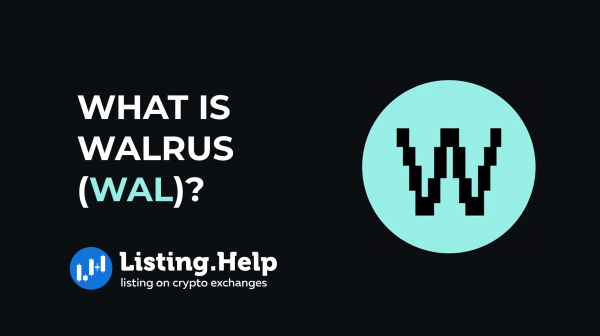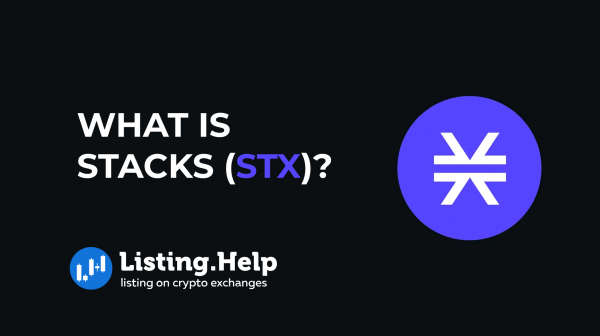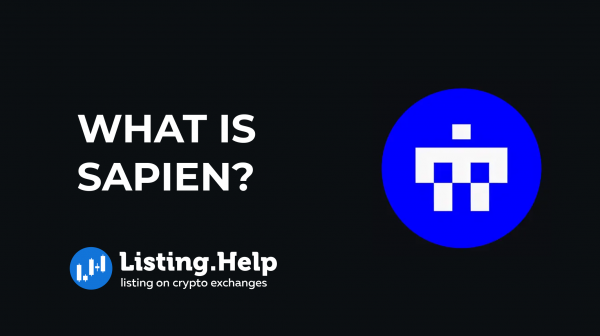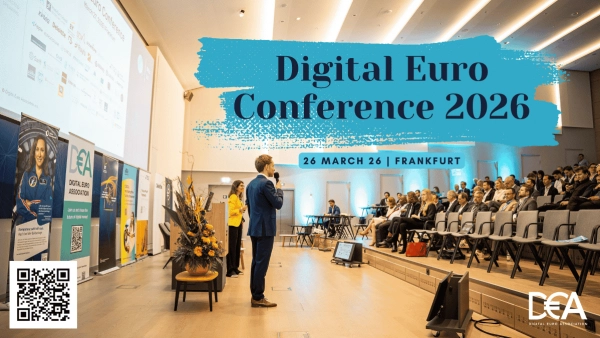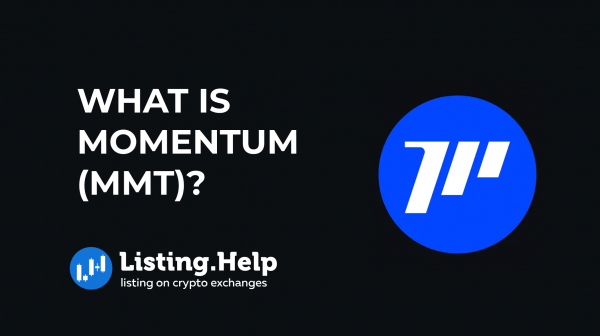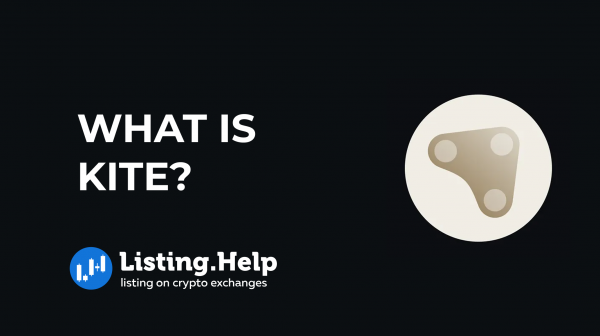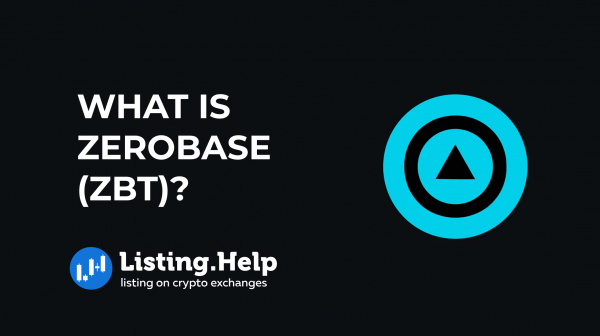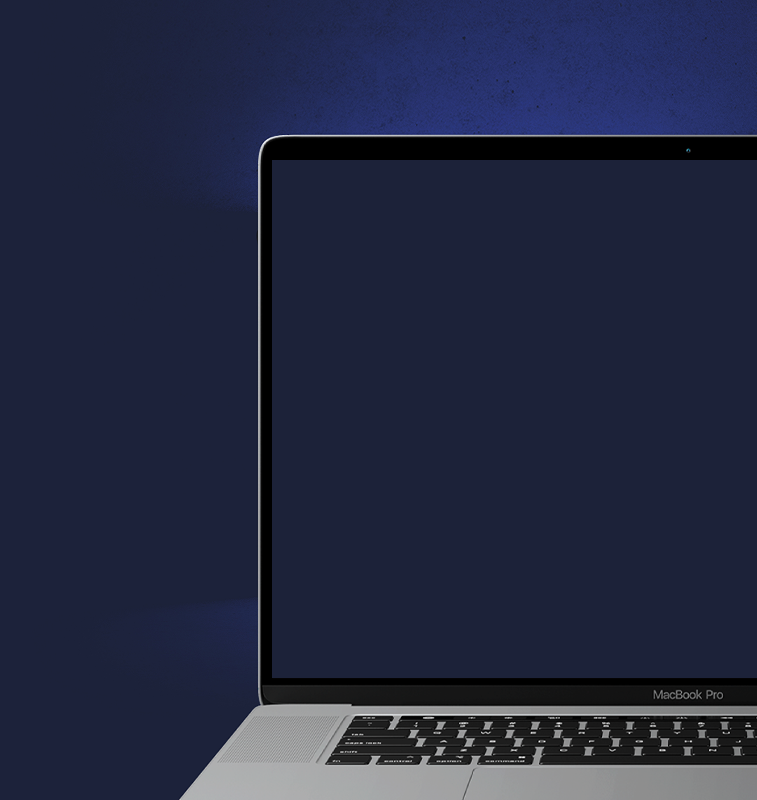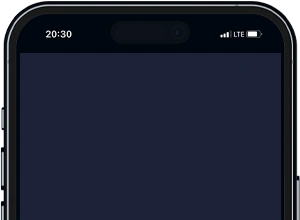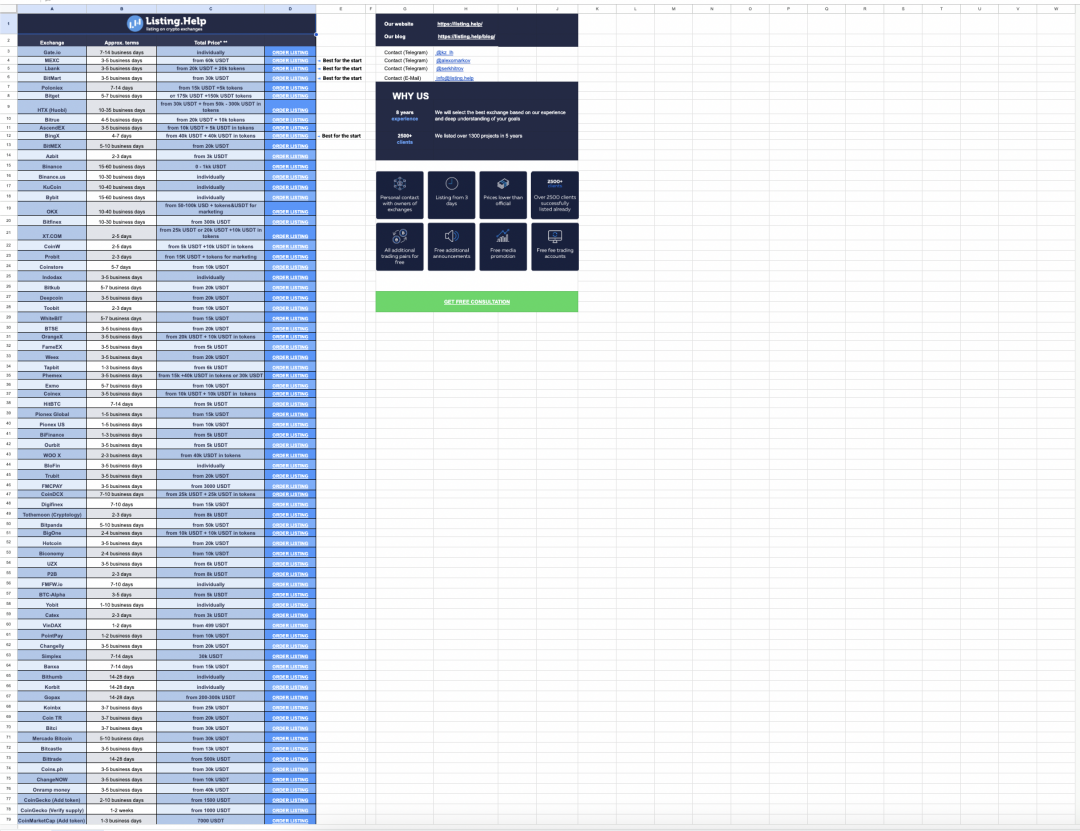How to Create a DAO: Step-by-Step Guide | Benefits and Risks
 February 11, 2025
February 11, 2025 Updated: July 16 2025, 01:21
Updated: July 16 2025, 01:21
LEAVE A REQUEST
Launching your own token project? Our experts are ready to help with listing on exchanges, market making, marketing and other solutions
SUBMIT APPLICATIONCryptocurrency’s foundation in decentralization has made Decentralized Autonomous Organizations (DAOs) a widely adopted governance model within the blockchain space. With some technical know-how and the right tools, setting up a DAO can be relatively straightforward. However, before you get started, it’s crucial to have a solid plan and a supportive community. Let’s explore the essentials needed to establish your own DAO.
What is a DAO?
A DAO, or Decentralized Autonomous Organization, is essentially a group managed by computer code, where participation is open to anyone who meets certain criteria. The “autonomous” aspect refers to the use of smart contracts to automate most of the operations, reducing the need for human intervention. These organizations are built and operated by communities that collaboratively manage both funds and projects.
DAOs gained prominence with Ethereum’s 2016 venture capital fund known as “The DAO.” This project, however, faced a significant setback three weeks into its token sale when a vulnerability in the code led to an attack. Although the lost funds were recovered through a hard fork, the incident highlighted the early challenges of DAOs. Despite these hurdles, the concept has evolved and is now a common governance model, particularly in Decentralized Finance (DeFi).
While each DAO may function slightly differently, they generally adhere to similar principles. Typically, those who hold the DAO’s governance tokens have voting power proportional to their holdings. Token holders can also propose changes to how the DAO operates.
Why Create a DAO?
For crypto projects, DAOs offer several notable benefits. One of the most significant is the use of smart contracts, which reduce the dependency on human intervention. For example, after a vote on a proposal, the results can be recorded on the blockchain, automatically triggering the proposed action. This system prevents censorship and ensures that voting processes cannot be tampered with.
DAOs are particularly effective for organizing communities, especially when the members are largely anonymous. In these cases, traditional accountability measures may not apply, and trust among participants can be limited. A DAO enables these communities to self-organize efficiently, using technology that ensures fairness and transparency. Additionally, setting up a DAO is simpler and less costly than establishing a traditional organization, which is particularly advantageous for international teams.
However, it’s important to remember that participating in a DAO means accepting collective decision-making. Power is decentralized, which means you will not have complete control over the project’s direction. Ignoring the outcomes of governance decisions can lead to negative repercussions.
Analyzing the risks associated with DAOs
When creating your own DAO, your project may face some challenges:
- Management imbalance. When managing through a DAO, there can be an imbalance in governance. A participant’s voting power often depends on the number of tokens they hold. Large token holders then gain undue influence over decision-making. This contradicts the idea of decentralization and can lead to monopolization of power and decreased interest among minority shareholders.
To solve this problem, it is important to introduce a limit on the maximum number of votes per holder or to use voting models that allow minority opinions to be taken into account. Such a model could be quadratic voting, which is used, for example, in Gitcoin.
- Front running (abuse of insider information) can be another problem in which the minority gains an advantage over the majority. For example, this can happen when large DAO participants or technically savvy users anticipate a project’s actions and capitalize on them.
To solve the problem, we need to introduce transparent decision-making procedures and use zk-SNARK (Zero-Knowledge proofs) technology to ensure the privacy of voting data.
- Operational costs. Another challenge could be the high network load. Since DAOs run on blockchains, a high network load will increase transaction costs and may affect participants by making voting inaccessible to small investors.
To solve the problem, it is worth choosing blockchains with low-cost transactions. For example, instead of using Ethereum, one of the L2 blockchains, Arbitrum or Optimism, will be used, lowering transaction costs. If your project is already operational, migrating to a cheaper blockchain, such as Solana, can help.
Steps to Create a DAO
1. Establish the Foundation of Your DAO Project
The first critical step in DAO creation is to outline its fundamental structure. It’s important to recognize that a decentralized approach isn’t a one-size-fits-all solution for every organization or project. Before you consult with an Ethereum expert to write the necessary code or dive into using DAO tools, you need to clearly define the framework of your DAO.
Consider the following questions as you plan your DAO:
- What are the primary objectives of your DAO? What do you hope to accomplish?
- What kinds of decisions will your DAO need to make?
- Is your organization prepared to adopt a decentralized, community-driven ownership model?
- Are there existing challenges in your industry that a DAO could effectively address?
- Will your community, customers, or users benefit from the implementation of a DAO?
- Is it feasible to launch your business without relying on a DAO structure?
- What technical and development resources will be required to successfully launch your DAO?
- How do you see your community contributing to the realization of your DAO’s goals?
- Are you ready to navigate the evolving landscape of the crypto markets?
2. Choose the Type of DAO
After you’ve settled on the structure of your organization, the next step is to decide what kind of decentralized entity you want to create. The concept of DAOs is still evolving, so there isn’t a definitive list of all the possible applications. However, there are several established areas where these organizations have already made a significant impact. While yours might not fit into a traditional governance model like a Nation-State or City-State, understanding these categories can help shape your broader framework.
Choosing the type of decentralized organization can be challenging, so here are some common types to guide your decision:
Protocol Organizations
These are among the most common types, focusing on decentralized governance through specific protocols. They often use smart contracts to provide DeFi services. Notable examples include MakerDAO, Uniswap, and Yearn Finance.
Investment Groups
These bring together crypto holders to fund new projects or startups. They operate based on governance rights enforced through smart contracts, allowing members to collectively make investment decisions.
Grant Organizations
Similar to Investment Groups, these entities aim to support new projects. However, they are typically focused on DeFi initiatives. The Uniswap Grants program is a well-known example.
Social Communities
These serve as platforms for social networking within the crypto space. They create a space where community members can share ideas and discuss common interests, with Blockster being a popular example.
Collector Groups
Artists who create NFTs use these to manage ownership of their digital art. PleasrDAO is an example where NFT collectors, DeFi advocates, and digital creators collaborate in a decentralized manner.
Media Platforms
These allow content creators to engage directly with their audience, bypassing traditional marketing channels. Contributors can earn rewards in the organization’s native currency for their work. Forefront is an example that offers educational resources and growth opportunities for DeFi enthusiasts.
Entertainment Collectives
These support decentralized content creation, allowing creators to bring their ideas to life while retaining control over their projects. Flufworld, where members can customize and license 3D NFT characters, is one such collective.
Philanthropy Groups
These are less common but focus on supporting social causes within the Web 3.0 ecosystem. The Big Green DAO, which promotes awareness about sustainable food practices, is a pioneering example.
Examples of successful cases
We will list examples of existing projects and their DAO types for more understanding.
- MakerDAO is one of the first successful examples of a protocol-based DAO that offers decentralized lending and manages the DAI stablecoin. Users pledge collateral for the loan and receive DAI tokens. The project is managed through voting among MKR token holders.
- PleasrDAO is an organization of NFT collectors, a good example of DAO collectors. They make collective decisions to buy various digital art objects. For example, the organization purchased a unique album by the band Wu-Tang Clan.
- The Uniswap Grants Program is an excellent example of a grant DAO. It supports DeFi developers from Uniswap. Through voting, the community chooses projects that will contribute to the protocol’s development.
3. Plan Your Tokens
Once you’ve defined your organization’s structure and type, the next critical step is managing its token. Proper token allocation from the start is vital for effective fundraising and securing the support of your community and early backers.
Tokens play several roles, including:
- Offering incentives, rewards, and benefits
- Facilitating voting and governance within the group
- Creating opportunities for community growth and development
The development team must carefully decide on the token supply and allocation. Understanding the token’s use cases and planning its distribution can drive business growth and create value for both users and the community. Early investors will expect returns for their support, so it’s essential to allocate enough tokens to meet working capital needs and reward your community accordingly.
4. Build Your DAO
When starting out, you have the option to develop your DAO from the ground up or to use existing templates and tools designed specifically for creating decentralized organizations. These resources can assist with:
- Establishing the legal framework for your DAO
- Minting tokens
- Building your team
- Recruiting members
- Choosing a name for your organization
Here are some widely used tools on the Ethereum blockchain for building a DAO:
- Aragon: Provides a comprehensive toolset for governance and dispute resolution.
- Colony: A ready-to-use platform that allows you to launch a DAO in just 90 seconds.
- Syndicate: Specializes in launching investment-focused DAOs.
- OpenLaw: Helps developers quickly generate legal documents compatible with Ethereum.
- DAOstack: An open-source, technology-driven toolset for creating DAOs.
- Orca Protocol: Focuses on organizing people in a decentralized manner with a “people-first” approach.
The stages of DAO development include:
- Technical Architecture Development. At this stage, smart contracts are written to automate control processes. Aragon or Colony can help here.
- Tokenomics development. Designing the tokenomics enables you to establish:
- How tokens will be distributed among the team, investors, and the community.
- What vesting period will be set to prevent massive token sell-offs and a sharp price drop.
- And how the tokens will be used in the DAO. For instance, they can be utilized for voting on important decisions, for incentives that promote community contributions through rewards and referral programs, and tokens can serve for staking, enabling rewards and access to DAO features.
- DAO testing is the final stage before a project is launched. In this stage, smart contracts are tested on a test network, and vulnerabilities are identified. Hardhat or Truffle tools can help with testing.
- Getting post-release feedback and implementing changes will be important steps to identifying issues, improving smart contracts, and adapting governance models to meet changing needs. Once the DAO is launched, you should establish a process for collecting feedback from community members. This can be done, for example, through Snapshot or social media surveys.
Once your DAO is set up, you’ll need to establish tools to manage your treasury, handle tokens, and oversee crowdfunding efforts effectively.
5. Manage Your DAO Treasury
After setting up the initial coin offering (ICO) for your DAO tokens and determining their allocation, securing the collected funds is crucial. Some popular tools for managing a DAO treasury include:
- Gnosis Safe: A platform that offers multi-signature wallet solutions to secure your DAO’s treasury. Since 2017, Gnosis Safe has been a trusted tool within the Ethereum ecosystem. The multi-signature feature requires multiple approvals for transaction execution.
- Multis: Built on Gnosis Safe, it provides a comprehensive solution for managing all aspects of your DAO’s treasury.
- Juicebox: A popular platform for fundraising in the DAO space.
- Llama: A secure multi-signature wallet DApp specifically designed for DAOs.
- Parcel: Offers cost-effective tools for managing payments, payroll, and payment requests within your treasury.
- Utopia: Provides a suite of treasury tools for managing accounts, reports, and payments.
6. Establish DAO Governance
Effective governance is essential for the smooth operation of a DAO. The following tools can help you manage decision-making, voting, and fund allocation:
- Commonwealth: A unified platform for discussions, voting, and fund management.
- Paladin: Assists with depositing, managing, and lending governance tokens.
- Snapshot: A platform for submitting and voting on governance proposals.
- Sybil: Built on Uniswap, it supports on-chain governance and delegation.
- Boardroom: A robust resource for managing DAO governance.
- Tally: Facilitates voting and delegation for on-chain governance proposals.
DAO voting plays a key role in project governance, so it is important to ensure that voting is fair and efficient. For a better understanding, let’s look at the different governance models:
- Proportional voting – where each token is equivalent to one vote. This is the simplest governance model and has one big disadvantage: large token holders get more power and minority opinions can go unnoticed.
- Quadratic voting – allows participants with a small number of tokens to have more influence because the value of votes grows quadratically. This model, compared to proportional voting, can reduce the risk of centralization.
- Delegated voting. In it, community participants delegate votes to more experienced participants. Thus, the approach improves the quality of decision making.
Practical recommendations
We have prepared practical recommendations to help you launch and manage your DAO successfully.
- Make sure to choose the right blockchain. When choosing a network for your DAO, consider the cost of transactions, scalability, and security.
Solana may be suitable for projects requiring high transaction speeds and low fees. However, when choosing Solana, you should be prepared for poor decentralization.
Polygon, TON, and Layer 2 blockchains on Ethereum can be great solutions, but they also have disadvantages. For example, TON will not suit projects that need high transaction speeds.
- Use proven tools. To simplify the creation and management of DAOs, use ready-made solutions that have already been tested by dozens of projects before you. Snapshot, for example, will allow voting without the cost of gas, reducing costs for community members. Gnosis Safe can increase transaction security by managing assets through multi-signatures. And Aragon would be suitable for creating DAO legal structures and automating governance processes.
- Hire experienced developers. As simple as this point may seem, many project owners try to save money on this point. To develop smart contracts and DAO architecture, it is crucial to attract qualified specialists with blockchain experience and basic knowledge of tokenomics. For example, you can start your search with the Gitcoin platform, which hosts many talented crypto-enthusiasts.
- Develop sustainable tokenomics. To do this:
- Determine the tokens’ purpose: whether they will be used for voting, community incentives, staking, or other useful functions.
- Balance when allocating tokens. Ensure that investor, team, and community shares are consistent with decentralization principles and eliminate the accumulation of power in one place.
- Establish a vesting schedule. This will help prevent sharp drawdowns in the token price.
- Establish a token burn mechanism. A deflationary mechanism will help maintain token value and manage inflation.
- Periodically review the tokenomics model. It can be updated by market influences or by the community’s needs.
- Test the systemthoroughlybefore launching it on the mainnet. This will help identify vulnerabilities and improve the user experience.
- Test smart contracts, for example, through Hardhat or Truffle, where you can write and test contracts on a test network.
- Simulate scenarios. Simulate usage scenarios to understand how the system works and what might happen in unexpected situations or high network load.
- Order an audit from a third-party auditing company. Experts can help identify vulnerabilities your in-house developers may have yet to notice.
- Test the user interface. This will help increase user experience and eliminate possible bugs.
- Conduct a test run. Running DAO on a test network will help gather user feedback and identify possible problems.
7. Build Your Community
A strong, independent community is the backbone of any created DAO. Prioritizing community building is essential when developing your decentralized organization. An engaged, interactive community plays a crucial role in the ongoing growth and success of your project. The effectiveness of your DAO largely depends on how well the community can participate in decision-making and project management.
For more insights and updates on the crypto world, don’t forget to check out our blog at Listing.Help




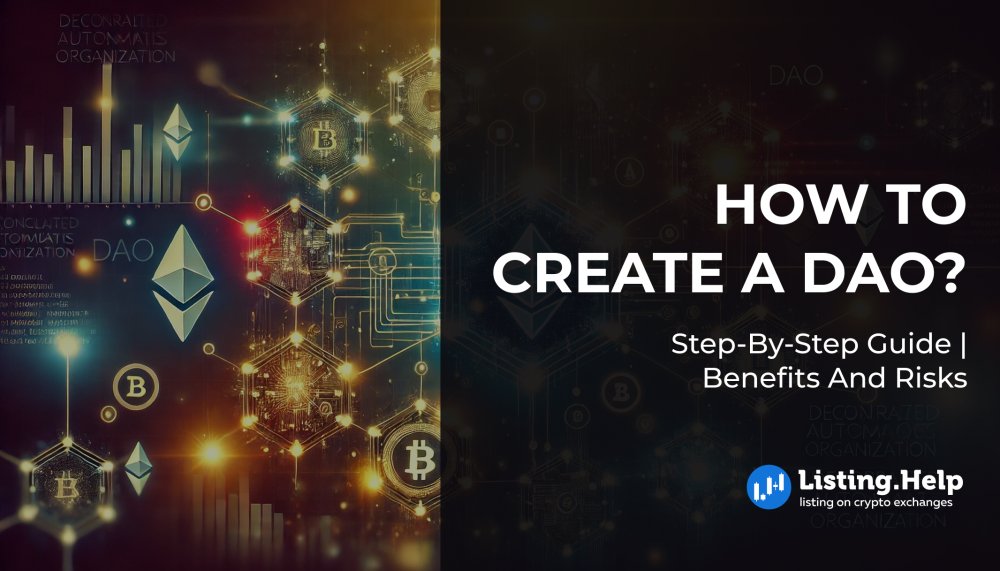

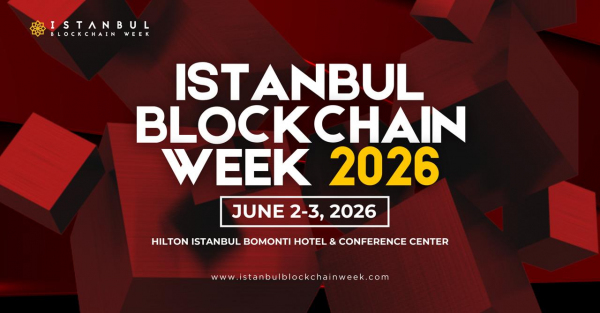
 December 22, 2025
December 22, 2025 